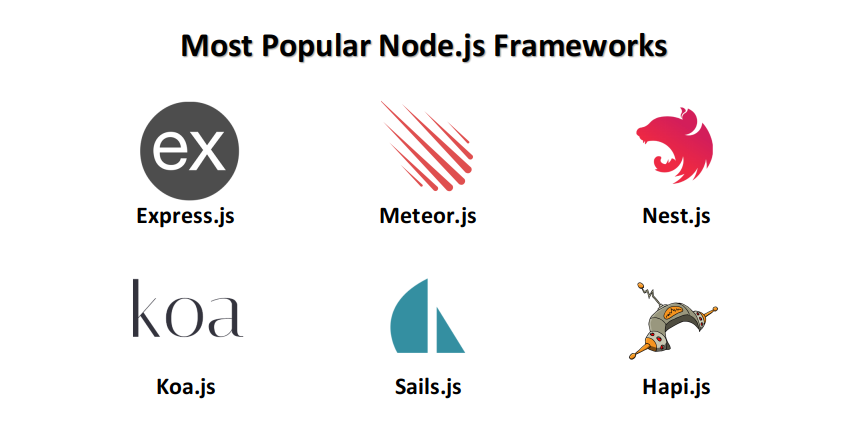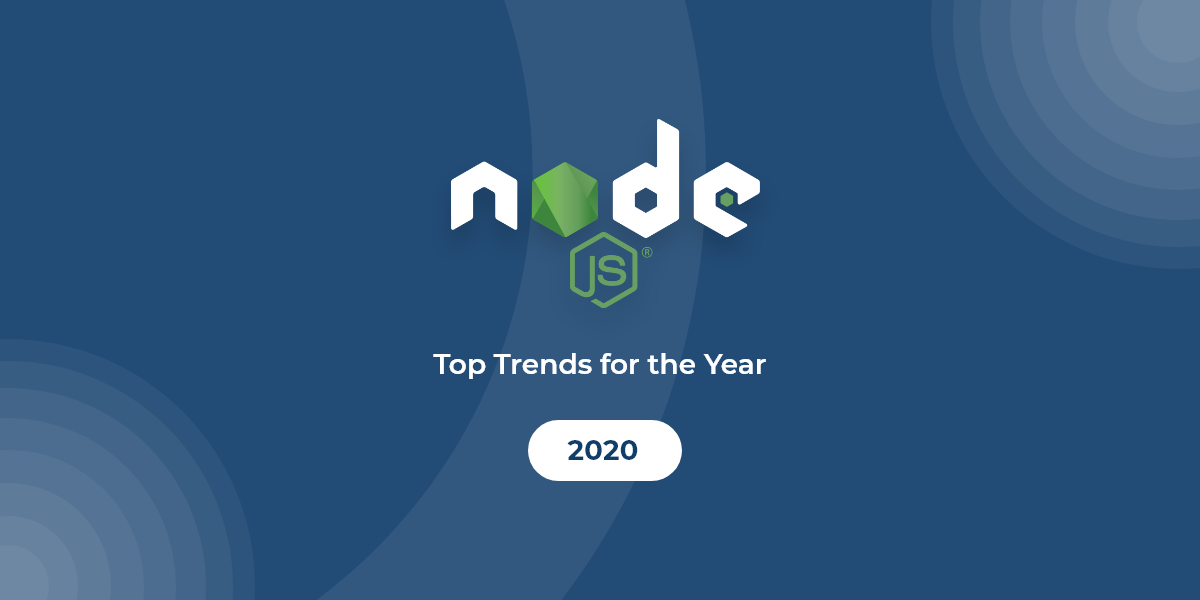Top Node.js Development Trends for the Year 2024
- Web
- November 14, 2019
The modern software development industry seems to be highly influenced by the JavaScript language and artificial intelligence in recent times.
According to a study by Gartner, in the year 2019 itself, the total global spending upon the IT sector is expected to cross $3.8 trillion with a 3.2% increment compared to the expenditure in the previous year.
The demand for full stack developers in this scenario will remain high not only in the upcoming years but a number of years more to come.
Node.js is one such framework which is a combination of libraries, helpers, and various tools that help you to create and operate enhanced and great web applications. Node.js gives your web platform a strong base to build upon and safeguard your online presence.
With the continuous and drastic growth in the Node.js development, a number of frameworks based upon Node.js have come up that are expected to rule the year 2024.
Top Node.js Frameworks
Node.js has a number of frameworks as mentioned under that are expected to play an integral role in driving the web development vertical for the year 2024. As an open-source JavaScript runtime environment, Node.js executes out of the browser.

Node.js is the most popular choice for developers in western countries and is continuously expanding its base. A number of major brands of global recognition saw a great transit in their popularity after using Node.js.
It is said to reduce downtime, is economically beneficial, and has a quick response time than any other framework would provide for a platform of the same efficiency.
Node.js is also not very costly and affordable to be used and hence has significantly become popular among the developers in reducing the development cost by about 12% annually.
The popular Node.js frameworks have been integral in taking the framework to the heights of success and are pulling up their game harder.
Express.js
Here’s a fast, popular, and flexible platform that offers a powerful collection of features for the web as well as application development for the mobiles. It is equipped with an amazing API that enables its users to send and receive certain requests and eases the coordination between the front end and the database.
Express.js has seen a great increase in its usage in the past few years and continuously has been rising with the upcoming years according to several predictions. It has more than 41K Github stars.
Express.js helps the developers to work efficiently and quickly without much hassle. It has an open-source community and is comparatively simple to learn and get expertise at. It is also ranked as the 11th most popular framework to work upon among the top 10k other frameworks.
Meteor
The framework is a highly simplistic and user-friendly full-stack node.js framework which is highly compatible for iOS, Android, or Desktop. The application development through Meteor.js is quite simple and easy and at the same time carries the capability to serve large projects.
Since its inception in 2018, it has seen an abrupt increase in its usage and development particulars. The framework had more than 40K Github stars signifying its popularity.
It has a wide and diversified set of packages and libraries and is equipped with a testing tool. It enables a consistent, smooth, and qualitative client-server communication and is also used highly for the purpose of debugging.
A number of full-stack developers have been working upon the framework to help the organizations grow and develop and is now the fourth most popular and used framework in India.
Read also: The Major Benefits of Choosing Meteor.js for Creating a Startup
Nest.js
A framework that allows an application to be built that is highly scalable. It has a strong base of TypeScript and is highly inspired by Angular in its features.
Nest.js has a simple interface, more flexible usage base, and comparatively less downtime than most of the other similar options in the domain. It is compatible with Node.js servers as well as with JavaScript Libraries.
Koa
This one is a comparatively smaller version but more of an expressive and robust foundation builder for the web applications and APIs. It is highly flexible and lets you structure the components in the way you want. Koa.js has a great user base and has 28K Github stars.
Koa framework has a basic requirement of node v7.6.0 or higher for ES2015 and async function support. Koa.js is comparatively a lightweight framework and hence easy to use and focuses more upon quick development. It also requires fewer codes and hence, enhances efficiency.
Koa is a middleware framework that can take two different kinds of functions as a middleware framework, namely:
- Async function
- Common function
Read also: Which is the Optimal Node.js Framework: Express.js, Koa.js or Sails.js
Key Features Making Node.js 2024 Ready
The development with the Node.js is effective, productive, and as per the desired requirements of the clients.
Experts who have been working in the domain for long and have a great base of successful projects and client base are happy to work with the framework and credit the framework to have eased the work.
1. Serverless and Hardware Free Solution
A highly advantageous feature of Node.js is that it eliminates factors like hardware and server maintenance from performance deciding factors.
This help to not only save cost but also reduce the time and hence, enhance the efficiency and productivity of the developers as well the organizations using the framework.
It has immensely improved upon the project quality, has highly reduced the project costs, and has powered the flexible usage of the codes for the developers.
2. Microservices
Microservices provided by the Node.js framework is helpful in increasing the maintenance of the codes. It acts to support the serverless approach and shows great effectiveness in the large projects.
Read also: How Good is Node.js for Developing Apps Based on Microservices?
3. Scalability
The services are performance-oriented and can significantly impact the execution speed and scalability of the project. It also has a major benefit that only the part of the affected code needs to be changed rather than changing the complete coding structure.
4. Reusability
The framework reduces logic replication highly and can be used by multiple applications.
5. GraphQL
As per the stats recorded by Facebook and Shopify, GraphQL is expected to grow beyond its existing level in 2022 and continue even in 2023 with great pace.
Including GraphQL in an application enables the use of sources of multiple data in an efficient and effective manner.
It also simplifies the workflow to a great extent on multiple platforms, and the development of new features – it can provide sample placeholder structures while features are still being.
6. Real-Time Apps
We widely use real-time applications regularly. From food delivery apps with the locations of our coveted meal (Zomato) to Google Docs, and many other online collaboration tools including a number of trading platforms.
All these applications require strong processing at the backend. Data serving platform like Node.js proves to be a great solution to suffice both of these needs with the outstanding support it provides for the WebSockets protocol.
7. Cloud Solutions
From building a new cloud app from scratch to scaling the existing cloud apps, Node.js can also be deployed to add efficiency. Its serverless structure is the main reason behind its better capabilities.
8. Use in IoT
For geo-distributed systems, tracking, and real-time features, Node.js lets you implement micro-services, real-time related capabilities, and data-centric approaches and becomes a good fit for building IoT applications.
Why is Node.js Promising For 2024?
- It has simplified application of different features and services in both horizontal as well as vertical positions.
- Node.js is easy to learn and master as well as in high demand due to its capabilities and uses.
- It gives the developer power to work upon the client as well as the server applications at the same time and hence, is one of the most advanced full-stack software development frameworks.
- Node.js is powered by the Google V8 engine which adds the fuel to its already high performance.
- Supported by a huge community which helps in resolving the problems quickly and easily.
Node.js, thus, has emerged as one of the universal frameworks for the development of a diversity of applications.
The benefits of the framework Node.js have been growing constantly with time and environment and the language has been delivering a great platform to the clients based on the requirements and desired features.
The framework has fuelled the digital transformation in a number of ways and has helped a number of organizations to leverage the advantage of the technology and online transition.
With more than 168K website using Node.js, organizations using the framework are happy and a number of clients are looking forward to increasing the usage of the framework in the upcoming years.
To Conclude
The Node.js ecosystem has been gaining major traction due to its features and efficiency. With a number of global brands continuously increasing its usage upon their platforms, the framework is observing good growth.













